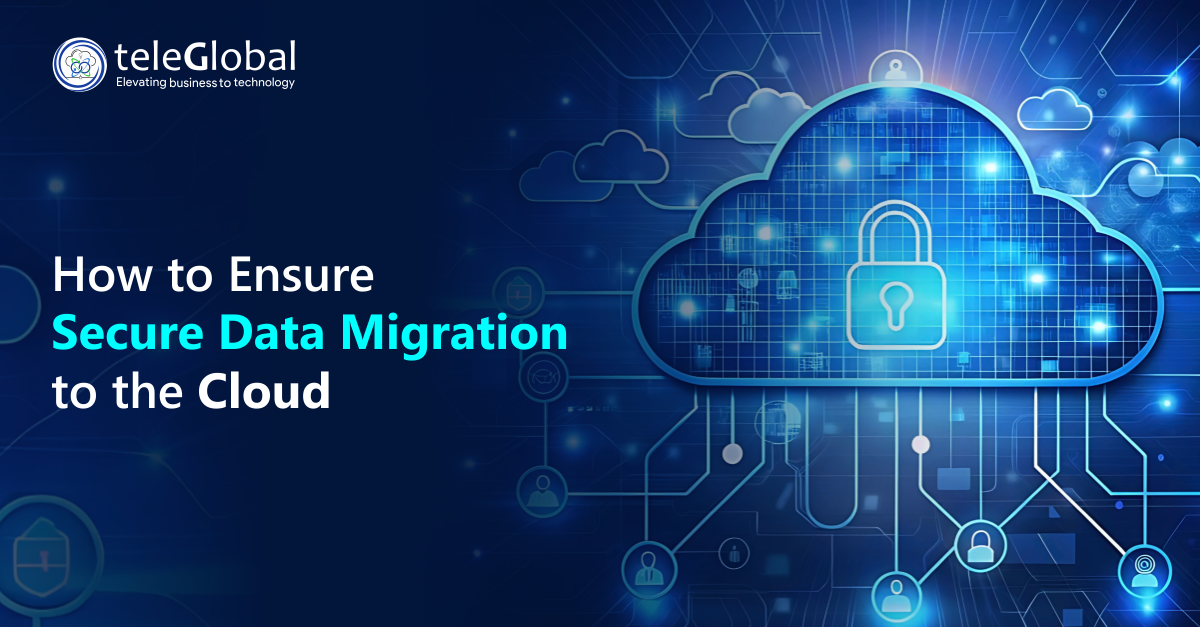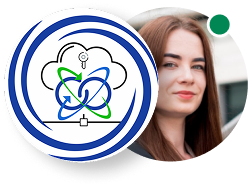
| Author: Kamlesh Kumar | Published: 27-Nov-2024 |
Transferring data to the cloud is a lot like boarding an international flight. The destination promises efficiency and speed, but without pre-flight checks, identity verification, baggage scans, and strict protocols, the journey can become a security nightmare.
Migrating to the cloud isn’t just a technical upgrade, it’s a critical shift in how your organization handles, stores, and secures its most valuable data. While the benefits of cloud adoption are clear-scalability, flexibility, and reduced infrastructure costs-those advantages can be quickly undermined by poor security planning during migration.
In this blog, we’ll explore essential best practices for securing your data migration, ensuring a smooth and safe journey to the cloud.
Before migrating data to the cloud, it’s important to conduct a thorough audit of your current data. This foundational step helps you understand your data’s structure, sensitivity, and compliance needs.
Identify the types of data being moved and determine their sensitivity. Examples include:
Determine which legal or regulatory standards apply (e.g., GDPR, HIPAA, CCPA) to ensure your migration strategy aligns with them.
Why it matters: Understanding your data helps you implement appropriate controls and protect what matters most.
Encryption is one of the most effective ways to secure data throughout the migration process. It ensures that your data remains protected both while it’s being transferred and once it’s stored in the cloud.
Use secure protocols like TLS or VPNs to encrypt data as it travels from on-premises systems to the cloud.
Make sure your data remains encrypted after reaching the cloud. Most cloud providers offer encryption services, understand how they work and whether they meet your standards.
For optimal security, use end-to-end encryption, where data is encrypted before it leaves your on-premises systems and remains encrypted throughout its entire journey to and from the cloud.
Choosing the right provider plays a major role in overall security.
Verify your provider has certifications like:
Clarify what the cloud provider is responsible for and what falls under your domain. This avoids blind spots in security coverage.
Look for features like:
Identity and Access Management (IAM)
Encryption services
Firewalls
DDoS protection
Controlling who can access what during migration is key to protecting sensitive information. Implementing strict access controls reduces the risk of unauthorized exposure.
Implement RBAC to limit data access based on user roles, ensuring that sensitive data is only accessible to authorized personnel.
Enforce MFA for all individuals involved in the migration process, adding an extra layer of protection against unauthorized access.
Grant temporary access and revoke it once tasks are completed to reduce the risk of lingering vulnerabilities.
Despite the best security practices, it’s always important to prepare for the worst. Data migration can come with risks, including data corruption, transfer issues, or downtime.
Ensure a complete backup of all the data to be migrated. These backups should be securely stored and easily accessible in case something goes wrong during the process.
Implement real-time sync between on-premises and cloud environments to reduce the chance of data loss.
Given the ever-evolving nature of security threats, continuous testing is essential to identify and resolve potential vulnerabilities throughout the migration process.
Simulate attacks to uncover potential vulnerabilities in your migration setup.
Regularly scan systems for weaknesses, especially after major updates.
Implement monitoring tools to detect any unusual activity in the network or cloud environment that could indicate a security breach.
Compliance with legal and industry regulations is crucial during data migration to avoid penalties and maintain customer trust.
Know where your provider stores data and ensure storage complies with local data protection laws.
Log all migration activities (access, transfers, changes) for future audits or incident reviews.
Ensure that your migration is compliant with applicable regulations and that you have the necessary documentation for audits or inspections.
Security doesn’t end once the migration is complete. Ongoing protection is essential.
Regularly monitor your cloud environment for any potential security issues and perform audits to identify and address vulnerabilities.
Review and update your internal security policies to reflect the new cloud environment, including any changes to access control and encryption requirements.
Ensure that employees are trained on cloud security best practices to minimize the risk of human error.
Securely migrating data to the cloud isn’t just about moving files, it’s about safeguarding your organization’s digital future. By following these best practices, from data classification and encryption to provider selection, access control, and post-migration vigilance, you can confidently embrace cloud adoption without compromising on security.
Just like a successful international flight ends not when the plane lands but when passengers clear customs, collect their baggage, and safely exit the terminal-cloud migration doesn’t end with data transfer. It requires continued monitoring, policy updates, and user awareness to ensure a smooth landing and a secure arrival in your new digital environment.
Cloud migration can be a transformative journey. With careful planning and strong security measures, your business can fully realize the benefits of the cloud while keeping sensitive data protected at every step.
Ready for take-off? Make sure your cloud migration is cleared for a secure landing, start with a free security readiness assessment today.
 close
close

Hi there! At TeleGlobal, we turn your cloud vision into AI-accelerated reality. What challenge can we help you solve?
Powered by ![]() teleBot
teleBot